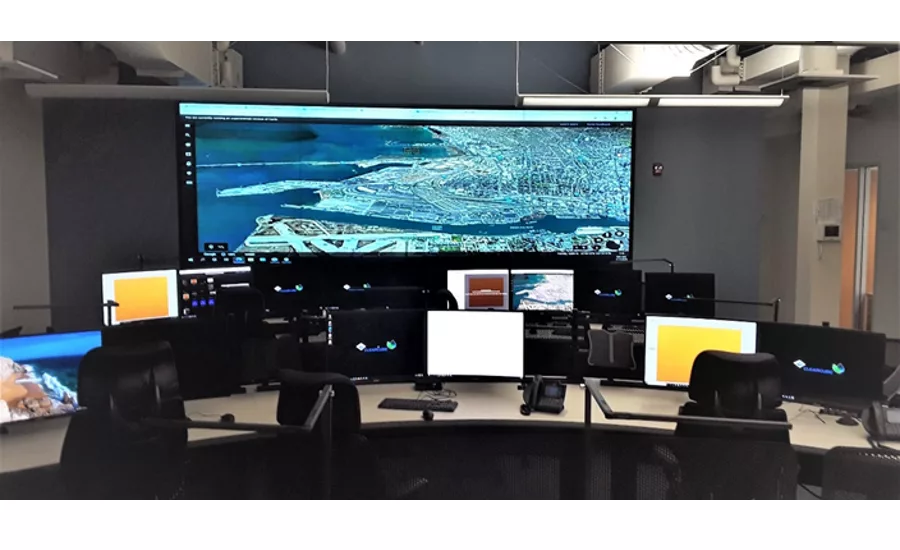Port of Oakland upgrades critical operations management with video wall

The Port of Oakland in Northern California is the fifth busiest seaport in the U.S and a vital driver of economic activity on the West Coast. The Port of Oakland oversees the Oakland Seaport, Oakland International Airport, and nearly 20 miles of waterfront including Jack London Square. Since its founding in 1927, the Oakland Seaport has served as the principle ocean gateway for international containerized cargo shipments in Northern California. The Oakland Seaport oversees 1,300 acres of maritime-related facilities serving a local market of over 14.5 million consumers.
The Port recently upgraded its mission-critical Transportation Management and Emergency Operations Center (TMC/EOC) to oversee the Port’s traffic flow, improve its maritime operations and provide a safer, more secure maritime area.
The role of the TMC/EOC is to manage the Port’s complex transportation logistics, control Port traffic, and provide 24/7 security monitoring. Its multi-faceted functions encompass improved situational awareness throughout the Port and all perimeter zones, monitoring freight activity, collecting and disseminating transportation data, communicating and collaborating with inter-agency and Port partners, disseminating traffic flow and wait time status to truck drivers, tracking incoming and outgoing vehicles, coordinating intermodal freight shippers, and monitoring local rail traffic.
In an effort to improve freight movement and logistics efficiency, along with ensuring awareness and resiliency in the Oakland Seaport area, the Port of Oakland invested in a new video wall powered by RGB Spectrum’s Galileo video wall processor. The processor can support a diverse variety of disparate digital and IP-based signal sources, and provide 4K image quality.
The Galileo processor receives a range of inputs, including conventional and infrared surveillance cameras, intrusion detection systems, digitized map data, traffic sensors, news feeds, local TV broadcasts, interagency communications, road condition data, weather information, RFID truck sensors, truck queue feeds and traffic incident information - and consolidates this data to provide a centralized, correlated view on the video wall. The Port can choose the size of windows to display on the 2 x 4 video wall. Operators can switch input sources, choose customizable, preset display layouts, and pan and zoom to view items of particular interest.
Port of Oakland Director of Maritime Bryan Brandes said, “the TMC/EOC’s new video wall system helps improve the Port’s maritime operations and provides a safer, more secure maritime area.”
Looking for a reprint of this article?
From high-res PDFs to custom plaques, order your copy today!







